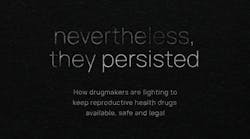The U.S. is still in the nascent stages of biosimilars. In fact, the U.S. Food and Drug Administration (FDA) is so concerned about promoting biosimilars that they released a Biosimilars Action Plan (BAP) in July 2018 to better clarify how companies can obtain approval and to educate the public. With this, we’ve seen a significant increase of approvals, with half (10 of 20) of the total biosimilar approvals in the U.S. coming in 2018 or 2019.
But with additional approvals, questions arise regarding manufacturing. Quality control can increase consistency, but it’s challenging to ensure anything that comes from a living cell is exactly identical. Even minor changes in any component of manufacturing or quality control could lead to changes in the biologic product, which may ultimately impact the quality, safety, efficacy, or interchangeability of biologics. This change in the product and its characteristics that can occur over time as a result of manufacturing changes is referred to as “product drift.”
As we continue to have multiple biosimilar and potential interchangeable approvals for the same reference product, it is important to consider how product drift will impact biosimilar products approved at different times, as well as the characteristics of the biosimilar product itself.
Biosimilar products approved under an abbreviated biologics license application (aBLA) pathway must be proven to be safe, pure, and potent for the approved use conditions. The proposed biosimilar establishes safety and effectiveness through a demonstration of biosimilarity to the reference product, and thus relies on the FDA’s previous safety and effectiveness findings for the reference product. If product drift occurs, a reference product may have different characteristics over time, meaning that biosimilar products may actually be demonstrating biosimilarity to essentially different reference products depending on when they seek approval.
Although there’s yet to be an approved interchangeable biosimilar in the U.S., the FDA provided draft guidance in early 2017 and final guidance in May of this year. Interchangeable status requires, in part, a switching study that confirms the safety of alternating or switching treatment. This requirement could be complicated if the reference product exhibits product drift.
The FDA has asked for comments on how to address post-approval manufacturing changes of interchangeable products. Many stakeholders feel that current FDA regulation of post-approval manufacturing changes for reference products are sufficient, whereas others fear that biosimilar products may cease to be biosimilar and/or interchangeable with the reference product over time due to product drift, thus potentially requiring recurring testing.
The BAP lists one of its objectives as “providing additional support to product developers regarding product quality and manufacturing processes” — a clear opportunity to provide clarity on the issue of product drift impact. The FDA should address this issue now, particularly in the situation where an interchangeable biosimilar may seek approval several years after an initial biosimilar approval for the same reference product. If product drift is a legitimate occurrence, we may have a scenario where multiple biosimilar products are approved at different times, thus being interchangeable with the reference product (at different times), while not being interchangeable with each other.
Product drift in biologics has been traditionally managed through testing after any manufacturing changes and through post-marketing surveillance. Changes are tested against the batch used in clinical trials, so comparisons are always made back to what was initially approved. In fact, in the 35 years since biologics were approved, only three cases of product drift in 260 biopharmaceuticals in the U.S. and Europe were ever reported, and only one of those was proven to be a meaningful difference. But this lack of significant product drift may simply be product dependent, thus not ensuring that future products won’t be impacted.
Perhaps product drifts concerns will not be significant as long as vigilance over manufacturing changes and post market surveillance remains. But it’s impossible to tell at this early stage. Regardless of whether one believes that product drift will be a significant concern, the BAP provides an opportunity for the FDA and stakeholders to consider and discuss mechanisms for monitoring this issue to avoid potential patient impact. No matter how remote the possibility, the potential impact of product drift is simply too important to ignore.



